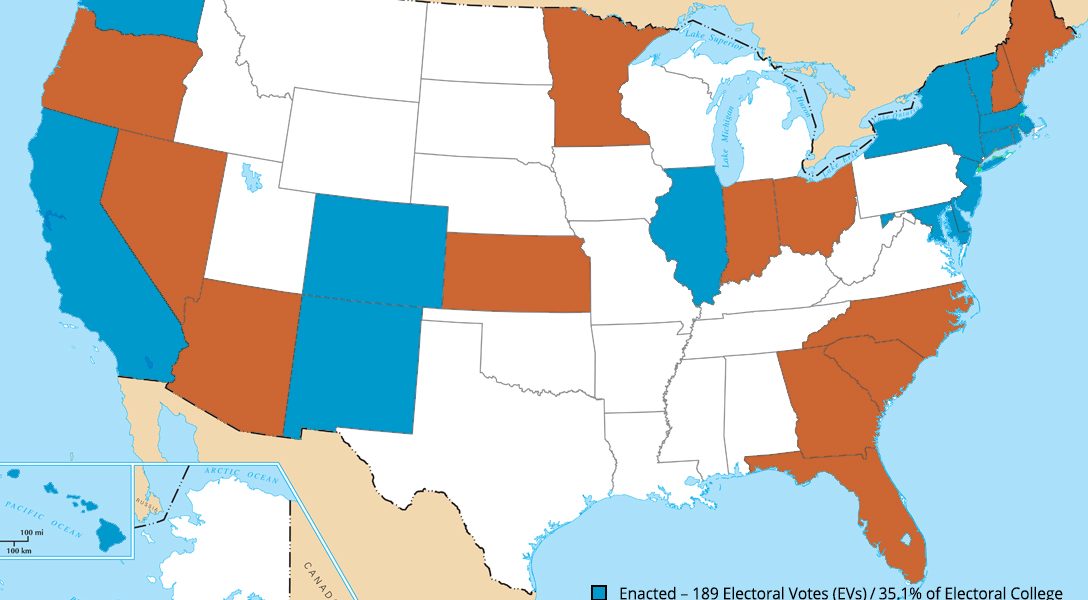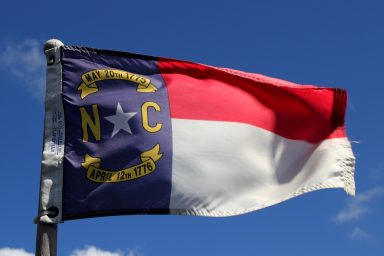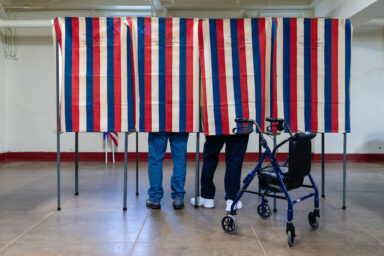As the 2020 campaign gets closer, political divisions are likely to be reflected in the debate over the National Popular Vote Compact, falling along predictable party lines.
The 2016 presidential campaign was historically unprecedented in a number of ways, not the least of which was that the losing candidate got nearly three million more popular votes than the winner.
Ever since November 2016, national Democrats have been scrutinizing ways to take full advantage of Hillary Clinton’s popular vote victory and make it work for them in 2020.
And at the state level, Democrats have started a serious push to shift how Americans elect presidents in the future, by having the national popular vote play a more decisive role than the electoral college.
Whether their efforts are picking up steam, or doomed to failure, is a matter of opinion — mostly partisan opinion at this stage. But there’s no question this effort has moved well beyond the hypothetical stage. More than a dozen state legislatures have already made a commitment in this direction. Their vehicle: the National Popular Vote Compact.
2016’s Mixed Political Message
In November 2016, Republican Donald Trump won the election by carrying 30 states, with a total of 304 electoral votes. Clinton, the Democratic nominee, carried 20 states and the District of Columbia, with 227 electoral votes.
But the popular vote went in the other direction, with Clinton winning 2.8 million more votes than Trump, and taking 48 percent of the vote to his 46 percent.
It was the second time in the past 16 years that the Democrats have carried the popular vote but lost the Electoral College (Democrat Al Gore in 2000 won 500,000 more popular votes than Republican George W. Bush).
Changing the US Constitution to mandate that presidents be elected by popular vote seems unlikely to gain any support from Republicans in Congress or in GOP-controlled state legislatures.
Therefore, Democratic-controlled legislatures across the country are looking to the National Popular Vote Compact. So far, 14 states and the District of Columbia have signed on, making a pledge to award their state’s Electoral College votes to the presidential candidate who receives the most popular votes nationwide.
The concept behind it is simple: by joining the compact, states agree to award their electoral votes to the popular vote winner, regardless of party.
So with 14 states onboard, is the compact moving full steam ahead?
Bipartisan Plan — Or One to Benefit Democrats Only?
The idea of the compact didn’t start after the 2016 election. It actually dates back to at least 2001, when Robert Bennett, a law professor at Northwestern University, suggested, in an academic publication, that a majority of the Electoral College could pledge to uphold the winner of the national popular vote.
Law professors Akhil Reed Amar and Vikram D. Amar later wrote that the idea would be constitutional if a group of states formed a compact agreeing to hand all their electoral votes to the national popular vote winner.
But there’s no question the idea picked up steam after the 2016 race.
For the compact to go into effect, the states within it would need to collectively total a majority of votes in the Electoral College, or 270. So far, states with 189 Electoral College votes have joined the compact.
That’s 70 percent of the total needed to go into effect, and just 81 votes shy of the magic number.
So far, though, the 14 states that have ratified the compact were all carried by Hillary Clinton. The compact is pending in another five states that Clinton carried. Not a single state that voted for Trump has adopted it.
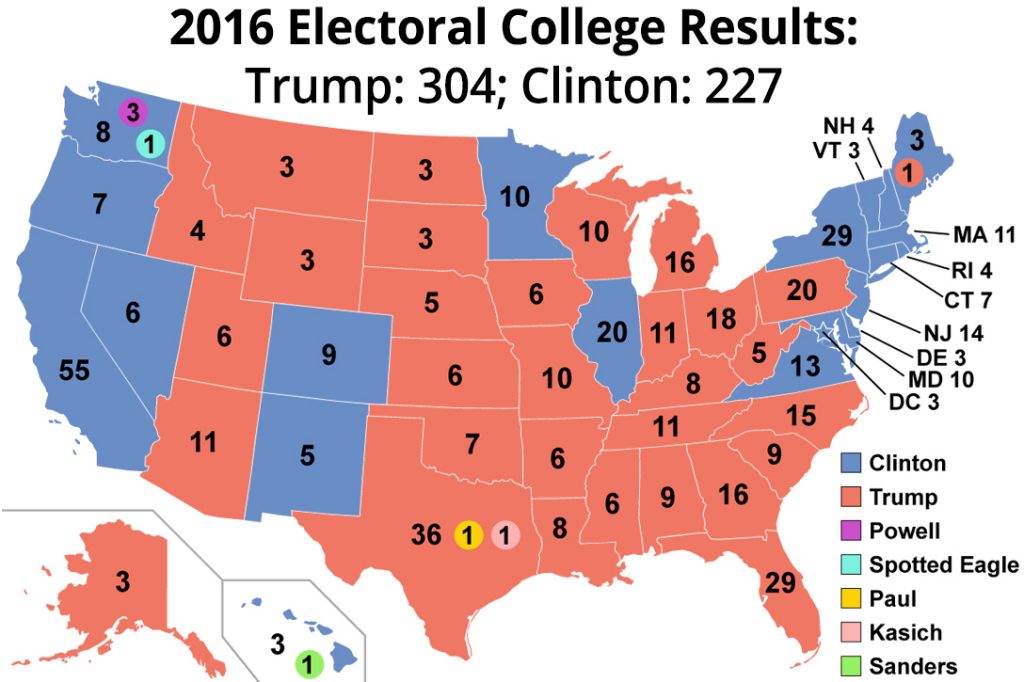
Still, the compact is pending in eight states that did vote for Trump — Arizona, Florida, Georgia, Idaho, Indiana, Kansas, North Carolina, and South Carolina. All eight states have legislatures controlled by Republicans, so the compact’s future in each of those states is a question mark at best.
That hasn’t stopped a vigorous debate about whether or not the popular vote should have a greater significance in the election of our nation’s presidents — and exactly which states or populations would be hurt if it did (or, for that matter, if the status quo remained in place).
It’s already become an issue in the 2020 race. Numerous Democratic presidential candidates have been vocal in their support for ditching the Electoral College in favor of a national popular vote. During a town hall event in Jackson, MS, Sen. Elizabeth Warren (D-MA) promised to abolish the Electoral College entirely, saying, “Every vote matters, and the way we can make that happen is that we can have national voting, and that means get rid of the Electoral College.”
Likewise, Sen. Kirsten Gillibrand (D-NY) wrote: “The Electoral College has distorted the outcome of elections and disenfranchised millions of voters, and I think that’s wrong. I believe that it’s time to get rid of the Electoral College, and I am ready to fight in Congress and around the country to pass [a] Constitutional Amendment to do that.”
But not all Democrats have been as quick to get on board. Some presidential nominees question the effort — not whether using the popular vote is a good or bad idea, but whether it’s realistic and practical. Former Rep. John Delaney of Maryland said he doesn’t think it is, adding, “If I was starting from scratch, yes, but trying to abolish the Electoral College now is impractical.”
Former Colorado Gov. John Hickenlooper (D) took a similar view, saying, “While many of us are frustrated with the way the Electoral College works … there is no possibility of abolishing it in the near term.”
Still, state lawmakers who have voted to join the compact, or are now considering it, are more optimistic. And they’re making the argument that it’s actually a creative way of empowering voters across the country, including those that live in a state that isn’t viewed as competitive.
The Oregon Senate just voted to join the compact (although the measure still needs to be approved by the Oregon House), and one of the supporters, state Sen. Michael Dembrow (D-Portland), said he favored it because it would help put all 50 states in play.
“What it means is that it doesn’t matter where I live,” Dembrow told the Oregonian. “I have as much of a chance of influencing the election as someone in any state in the country. This is what one person, one vote is all about.”
And the measure did pick up the support of two Republicans: Sen. Brian Boquist of Dallas, Oregon, and Sen. Chuck Thomsen of Hood River.
Most Republicans, though, have taken an “If it ain’t broke, don’t fix it” approach to the compact, saying it makes no sense to change a system that’s been around for 200 years.
A measure to put the issue on the ballot in Ohio died when supporters withdrew the plan from the Ohio secretary of state’s office, and Republicans, including Gov. Mike DeWine (R), called it hopelessly partisan.
Revisiting 2016 Under the National Popular Vote Compact
If this new system had been in place in 2016, how would it have impacted the presidential race?
Let’s start with the premise that the compact contained states with a combined total of 270 electoral votes pledging to support the national popular vote winner, regardless of which candidate their own state voted for. If Hillary Clinton had carried the national popular vote, she would have secured the Electoral College votes of those states — even the ones she lost. At that point, Clinton would have been elected president based on her national popular vote majority. Because the states participating in the compact would award all of their 270 electoral votes to her. And that’s what makes Republicans nervous.
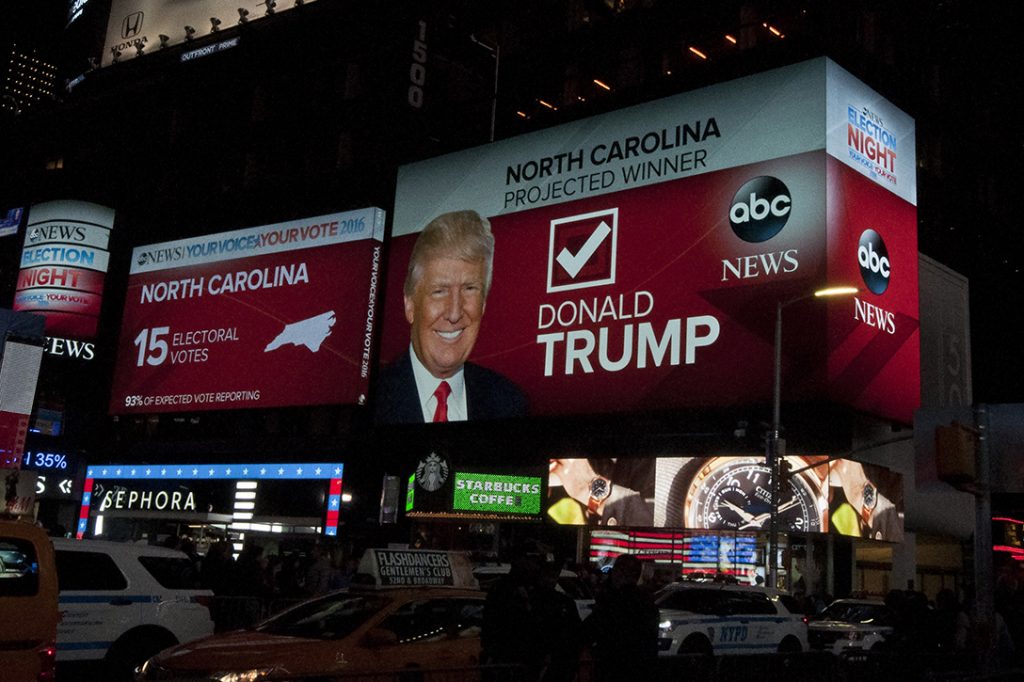
Critics of the plan say this is nothing more than an attempt to weaken Trump’s reelection bid, by creating a loophole that makes it easier for Democrats to win without a traditional electoral vote majority.
But not all GOP leaders agree. Saul Anuzis, former Republican Party leader in Michigan and former member of the Republican National Committee, has become an advisor to the National Popular Vote movement. In a column in The Hill, Anuzis disputed the notion that the Electoral College protects the interests of small states by preventing larger ones like California and New York to dominate the popular vote. The truth, he added, is that small red states like Wyoming, Alaska, and North Dakota, and small blue states like Vermont, Delaware, and Hawaii, get virtually no attention during presidential campaigns because they’re not considered competitive.
Instead, the shrinking number of “battleground states” like Florida, Pennsylvania, and North Carolina get most of the attention, he said.
“Small-state interests routinely get ignored under the current system, in favor of the parochial interests of a few battleground states,” he wrote. “It is obvious that a lack of small-state influence is a shortcoming of the system. National Popular Vote, when it takes effect, will ensure that a voter in Bismarck, North Dakota, for example, is as relevant as a voter in Boca Raton, Florida.”
He also disputed the notion that Republicans couldn’t win the national popular vote, making this new system one that would solidly favor Democrats in the future.
https://www.youtube.com/watch?v=q0rOKo9BWEU
“As for Republicans not being able to win a national popular vote election, as a former state party GOP chairman who twice ran for national chairman, I believe in the power of our ideas,” he wrote. “Under this new system, the candidate with the best ideas — ideas that resonate with the most American voters — will be elected president of the United States.”
Since 1992, Democrats have won the popular vote every year except 2004 (when President Bush won a slim 50.7 percent popular vote majority), so the compact would naturally benefit them.
Not surprisingly, a growing number of Republicans in Washington seem to be skeptical that Trump — or any other GOP nominee, should the president decide not to seek reelection — can win the popular vote next year. Their concern is that some of the largest states — including California, New York, Illinois, and New Jersey — are so solidly Democratic that a lopsided blue vote in those states wipes out GOP vote totals in smaller, rural red states. Some are writing off the popular vote altogether.
David Carney, a GOP New Hampshire strategist, told the Washington Examiner, “California, Illinois, and New York make it very, very difficult for anybody on our side to ever again to win the popular vote.” He said Republicans have a lot more confidence in Trump’s ability to again carry a majority in the Electoral College, saying “Two hundred seventy — that’s what people remember.”
Ironically, if Trump were to win a second term by gaining a majority only in the Electoral College, in would be a historic first: a two-time winner who would have failed both times to carry the popular vote.
But is it necessary for Democrats to enact the compact before the 2020 presidential race to be competitive? And do Republicans have good reason to feel confident about having an advantage in the Electoral College?
Sizing Up the States in 2020
Looking ahead to the 2020 presidential campaign, the Cook Political Report doesn’t rank a single state that voted for Hillary Clinton as a toss-up, although four states she carried — Maine, Minnesota, New Hampshire, and Nevada — are listed as “Leans Democrat.”
On the other hand, the prognosticators at Cook list five states that Trump carried — Arizona, Florida, Michigan, Pennsylvania, and Wisconsin — as toss-ups. All but Arizona voted twice for President Obama, and all five states voted for President Bill Clinton’s reelection in 1996.
Together, those five states have a combined total of 86 electoral votes. Trump got 304 electoral votes in 2016, and the loss of those five states would drop his total to 218, well below the 270 needed to win.
Adding up the states that the Cook Political Report ranks as safely, likely, or leaning Democrat, the Democratic nominee should start with a minimum of 232 electoral votes, the site reports. Republicans start with a similar number, 220.
The website Crystal Ball offers a similar but slightly different projection of how the 2020 presidential race looks, ranking Arizona, New Hampshire, Pennsylvania, and Wisconsin as toss-ups. Crystal Ball has Florida leaning Republican and Michigan leaning Democrat; they have only 46 electoral votes (counting Nebraska’s 2nd Congressional District — Nebraska and Maine both award electoral votes by the total in individual congressional districts) as being up for grabs. If the Democrats were to win all the toss-up states in 2020, Trump would get 258 electoral votes, just 12 short of a majority.
Both the Cook Political Report and Crystal Ball are predicting an extremely tight and competitive presidential race in this deeply divided nation. It seems likely the ongoing debate over the National Popular Vote Compact will divide voters as well. In Colorado, Democratic Gov. Jared Polis signed the National Popular Vote bill into law on March 15, even as polls showed a clear split among voters on the idea.
Polling on the issue found that 47 percent of likely Colorado voters approved of changing the way Colorado awards its electoral votes — while 47 percent opposed it. As the pollsters noted, opinion largely followed along party lines.
